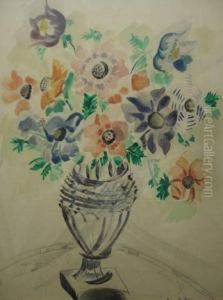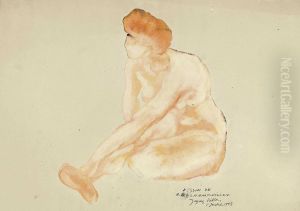Raymond Duchamp-Villon Paintings
Raymond Duchamp-Villon was a prominent French sculptor who played a key role in the development of early 20th-century modernist sculpture. He was born Pierre-Maurice-Raymond Duchamp on November 5, 1876, in Damville, Normandy, into a family with a strong artistic lineage. His brothers Jacques Villon and Marcel Duchamp became well-known painter and avant-garde artist respectively, and his sister Suzanne was also an artist. Despite initially studying medicine, Duchamp-Villon's passion for art prevailed, and he turned to sculpture after an illness around 1898.
Duchamp-Villon's early work was influenced by traditional styles, but his exposure to the avant-garde scene in Paris led him to experiment with Cubism and abstraction. His sculptures began to incorporate the fragmented forms and complex geometries characteristic of Cubism. One of his most famous works, 'The Horse' (1914), exemplifies this shift and is considered a masterpiece of early modernist sculpture. Unfortunately, his career was cut short when he died during the 1918 flu pandemic on October 9, 1918.
Despite his brief career, Duchamp-Villon had a significant impact on modern sculpture. He was a member of the Section d'Or group, which included artists like Jean Metzinger, Albert Gleizes, and his brother Jacques Villon, and his works were featured in important exhibitions that helped define the modernist movement. Duchamp-Villon’s contribution to art was not just through his own creations but also through his influence on his siblings and his role in the broader context of the early 20th-century avant-garde.

